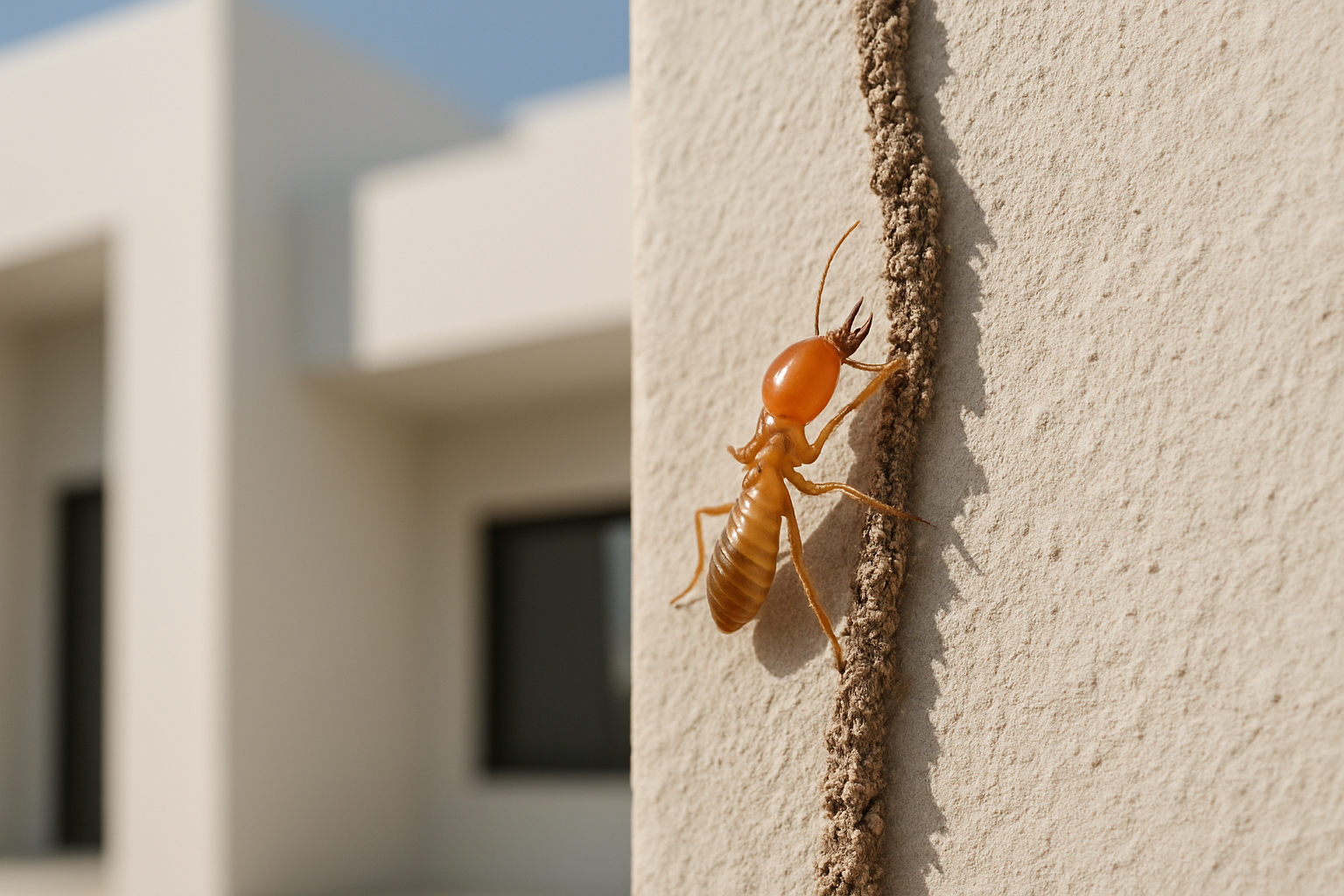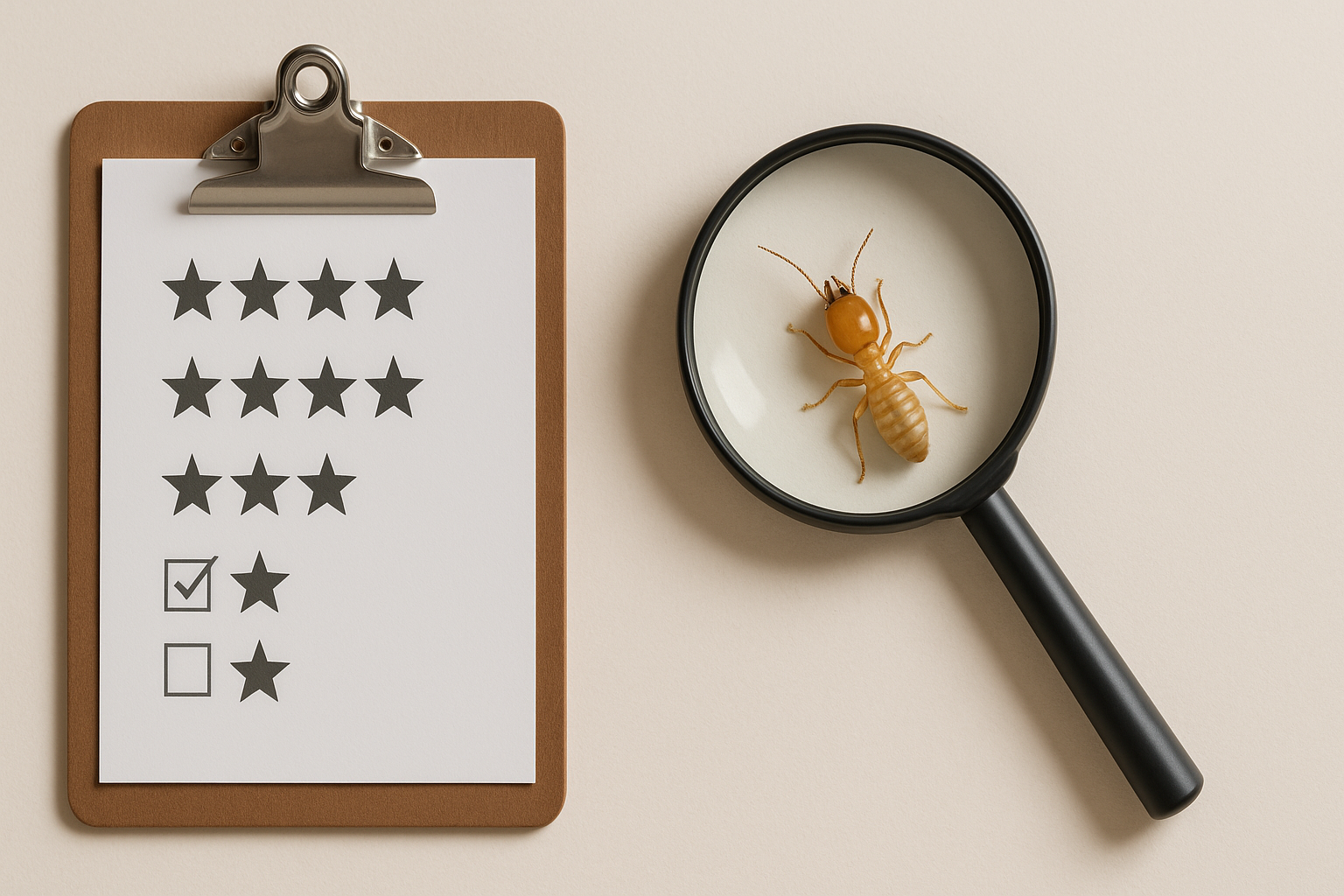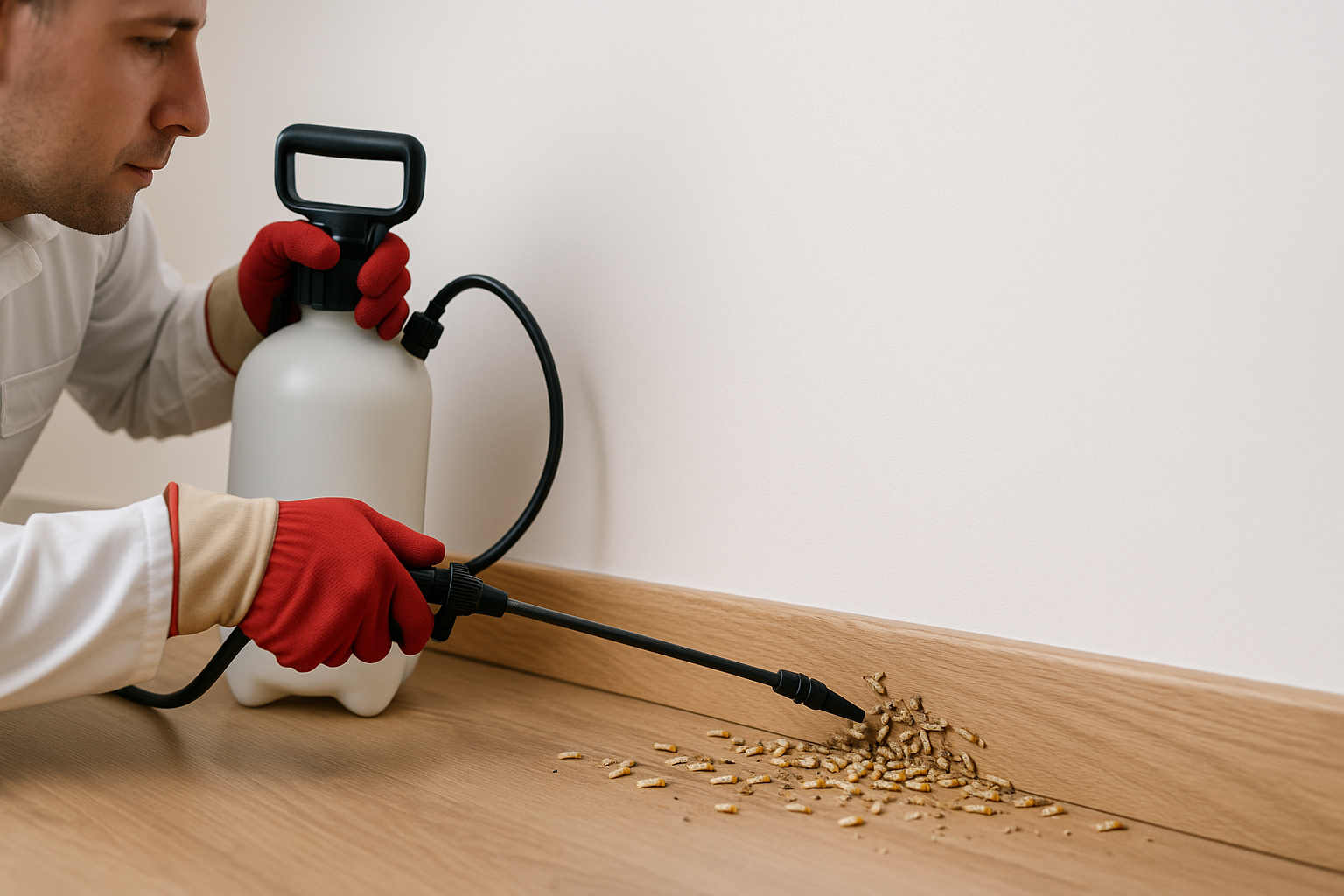Table of Contents
Understanding Termite Behavior in Al Mizhar 3
Termite behavior in Al Mizhar 3 plays a pivotal role in how property owners and pest control experts approach the problem of infestation. These tiny but destructive insects adapt uniquely to the climate and urban environment of Dubai, particularly in areas like Al Mizhar 3. Knowledge of their habits—such as nesting preferences, feeding patterns, and colony expansion—is essential when planning inspection and treatment strategies.
Termites thrive underground in Al Mizhar 3’s soil conditions and often exploit moisture-rich areas around buildings. They are renowned for their ability to remain concealed while silently damaging wooden structures, drywall, and insulation materials. This hidden behavior means infestations frequently go unnoticed until serious damage is done. For a deeper dive into mitigating this issue, explore comprehensive strategies for managing termite behavior in Al Mizhar 3.
Understanding their habits helps homeowners identify potential risk zones and create preventative measures effectively tailored to their properties. Early detection through professional inspection services is critical, given the pest’s secretive lifestyle.
Common Termite Species in Al Mizhar 3
Knowing the specific species prevalent in Al Mizhar 3 provides valuable insights into termite behavior in the area. The two most common termite types found in Dubai, and specifically in Al Mizhar 3, are subterranean termites and drywood termites.
- Subterranean Termites: These termites build extensive underground colonies. They require contact with moisture, which Dubai’s infrastructure and irrigation systems often facilitate. They typically enter properties through cracks in foundations or gaps around plumbing.
- Drywood Termites: These termites live directly inside wooden structures without needing soil contact. They can infest furniture, roofing timber, and wooden panels, making them particularly challenging to detect in Al Mizhar 3 homes.
Termite behavior in Al Mizhar 3, driven by these species’ biological needs and environmental factors, influences how infestation patterns develop over time.
Why Inspection Is Essential in Al Mizhar 3
A thorough termite inspection in Al Mizhar 3 is crucial to controlling and preventing termite damage. Because termite behavior in Al Mizhar 3 involves hidden activity underground or inside wood, visual signs may be limited or subtle. Professionals trained in termite detection can identify early warning signs before structural damage becomes extensive.
Dubai residents in Al Mizhar 3 should prioritize regular inspections, especially when buying property or after construction. A proper evaluation includes:
- Examining soil conditions around the building
- Checking wood for hollow-sounding areas or mud tubes
- Using moisture meters to detect damp zones attractive to termites
- Assessing potential entry points in walls and foundations
These steps allow pest control experts to create effective treatment plans aligned with local conditions and termite behavior in Al Mizhar 3.
Termite Inspection Services in Dubai
Dubai’s climate and fast urban growth have increased demand for reliable termite inspection services, particularly in neighborhoods like Al Mizhar 3. Reputable companies in Dubai employ cutting-edge technology and follow guidelines provided by Dubai Municipality and local health authorities.
Saniservice, a Dubai-based pest control provider, specializes in detailed termite inspections focusing on termite behavior in Al Mizhar 3 homes and commercial buildings. Their services include acoustic detection, thermal imaging, and moisture assessment, all crucial to spotting infestations early and mitigating potential damage.
Professional inspections not only evaluate current conditions but also deliver comprehensive reports explaining termite risks and recommended follow-ups, giving property owners a practical foundation for long-term pest management.
Frequently Asked Questions About Termite Behavior in Al Mizhar 3
Here are some common questions property owners in Al Mizhar 3 ask regarding termite behavior and management:
How quickly can termites damage my property in Al Mizhar 3?
Termite behavior in Al Mizhar 3 involves continuous feeding on cellulose materials. Damage progression depends on colony size and species but can escalate rapidly if left untreated—within months to a year of infestation.
Can I detect termite activity without professional help?
Subtle signs like mud tubes, discarded wings, or blisters in wood surfaces might indicate termite presence. However, termite behavior in Al Mizhar 3 is often hidden, so professional inspection is strongly advised for accurate detection.
Are termites only attracted to old buildings in Al Mizhar 3?
No. Termite behavior in Al Mizhar 3 shows they target structures with accessible wood or moisture, regardless of building age. New builds also require termite protection measures.
How often should I schedule termite inspections?
In Dubai’s Al Mizhar 3 area, annual inspections are recommended, especially during warmer months when termite activity peaks.
Signs of Termite Infestation in Al Mizhar 3 Properties
Recognizing these common signs linked to termite behavior in Al Mizhar 3 enables earlier response and protection:
- Visible mud tubes: Termites build protective tunnels along walls or foundations.
- Hollow wood: Wood sounds hollow when tapped, indicating internal tunneling.
- Discarded wings: Swarming termites shed wings, often found near windowsills.
- Stained or blistered paint: Wood moisture caused by termite activity may cause surface damage.
- Soft or crumbly drywall: Internal termite damage weakens wallboards.
Spotting these early can save significant repair costs and discomfort caused by termite activity in Al Mizhar 3.
Effective Control Methods for Termite Behavior in Al Mizhar 3
Combating these pests in Al Mizhar 3 requires integrated pest management tailored to the local environment. Here are some of the most effective strategies employed by pest control experts in Dubai:
| Method | Description | Suitability in Al Mizhar 3 |
|---|---|---|
| Soil Treatment | Application of termiticides in the soil barrier around foundations. | Highly effective for subterranean termites common in Dubai. |
| Bait Systems | Strategically placed termite baits lure and eliminate colonies. | Environmentally friendly option for residential properties. |
| Wood Treatment | Treating timber with protective chemicals or heat. | Essential for drywood termite prevention. |
| Physical Barriers | Installation of mesh or sand barriers during construction. | Useful for new buildings in Al Mizhar 3 to prevent infestation. |
| Regular Inspection & Monitoring | Scheduled professional checks for early damage detection. | Critical ongoing control due to termite behavior in Al Mizhar 3. |
Property owners should consult with licensed pest control providers in Dubai to select appropriate methods aligned with termite behavior in Al Mizhar 3.
Regulations and Guidelines for Pest Control in Dubai
Dubai maintains strict regulations to ensure public health and safety in pest control practices. The Dubai Municipality Public Health Pest Control Section oversees licensing and enforces compliance on pest management operators.
Adhering to these guidelines is vital when addressing termite behavior in Al Mizhar 3. Termite control professionals must use approved chemicals, follow environmental safety protocols, and provide certification after treatment. These measures protect residents and ensure sustainable pest management in Dubai’s neighborhoods.
Conclusion and Call to Action
Understanding termite behavior in Al Mizhar 3 empowers property owners to take informed, proactive steps against costly infestations. Early detection through trusted inspection services is paramount, supported by professional pest control methods and compliance with Dubai’s regulations.
Don’t wait for visible damage—schedule a termite inspection today with a Dubai-based expert like Saniservice. Protect your home and investment from the hidden threat of termites by staying vigilant and informed about these pests in Al Mizhar 3.
Understanding Termite Behavior in Al Mizhar 3
Al Mizhar 3, a vibrant residential area in Dubai, is increasingly facing challenges related to termite infestations. Understanding these pests’ behavior in Al Mizhar 3 is crucial not only for homeowners but also for property managers and pest control professionals working within the locality. The warm climate and abundance of landscaped gardens provide an inviting environment for termites, particularly subterranean species, which are known for causing extensive structural damage if left unchecked.
Seasonal Activity and Environmental Influences
Their behavior in Al Mizhar 3 closely follows the region’s climatic patterns. The hot and humid months, particularly from late spring through early autumn, activate termite colonies and cause them to increase foraging and nesting activities. Subterranean termites, the most common in Dubai, thrive in moist soil conditions which are often maintained in landscaped gardens and green areas of Al Mizhar 3.
These termites rely heavily on moisture for survival, prompting them to build mud tubes that protect their delicate bodies from dehydration while they forage above ground for wood and cellulose materials. During the dry winter months, termite activity may slow down but seldom fully ceases, especially in irrigated areas or homes with moisture issues like leaking pipes or poor drainage systems. Understanding these seasonal fluctuations helps residents and pest controllers in Al Mizhar 3 anticipate peak infestation periods and apply preventative treatments at the most effective times.
Social Structure and Foraging Patterns
The social organization of termite colonies in Al Mizhar 3 is highly structured, consisting of different castes with specific roles—workers, soldiers, reproductive alates, and the queen. Workers are primarily responsible for foraging and nest maintenance, making their activities the primary cause of property damage. They seek out cellulose-rich sources, including wooden furniture, doors, window frames, and even paper products found within homes.
Termites exhibit sophisticated foraging behavior, often creating extensive tunnel systems underground that can span hundreds of meters. These tunnels allow them to silently infiltrate buildings without detection by homeowners. In Al Mizhar 3, termite infestations are frequently discovered only after significant internal damage has occurred, partly due to this covert movement.
Signs of Infestation and Damage Patterns
Identifying termite activity early in Al Mizhar 3 can save homeowners from costly repairs. Key indicators include:
- Damaged Wood: Hollow-sounding wood or surfaces that appear blistered or warped.
- Mud Tubes: Small, mud-covered tunnels running along walls, foundations, or garden structures.
- Discarded Wings: Swarmers, or alates, shed their wings near entry points during mating seasons, often around springtime.
- Frass or Droppings: Though less common with subterranean termites, drywood termites leave tiny pellet-like droppings.
In Al Mizhar 3’s residential interiors, damage often begins with wooden support beams, window frames, and furniture. Outdoors, termite activity might target perimeter landscaping wood, fence posts, or garden sheds. Given the high humidity in some irrigation zones, termite colonies can expand rapidly unless control measures comply with Dubai Municipality pest management guidelines.
Impact of Urban Development and Landscaping Practices
Urban development in Al Mizhar 3 has introduced landscaping features that contribute to termite habitat expansion. The extensive use of mulch, irrigation systems, and wooden garden structures offers termites easy access to food and moisture. Moreover, many older buildings with untreated timber in their frames provide ideal nesting sites.
Residents who maintain healthy lawns and gardens must remain vigilant as excessive irrigation or stagnant water pockets create favorable microenvironments for termites. Dubai’s pest control regulations encourage the use of integrated pest management (IPM) practices, combining cultural, mechanical, and chemical methods to minimize termite infestations in residential areas like Al Mizhar 3 while ensuring environmental safety.
Effective Monitoring and Prevention Strategies
Proactive termite monitoring in Al Mizhar 3 forms a cornerstone of effective termite management. Reliable pest control services in Dubai typically employ baiting stations and regular inspections, focusing on known termite pathways such as utility conduits, wooden structures, and subfloor areas. Homeowners are advised to take the following preventive steps:
- Reduce moisture by fixing leaks promptly and ensuring proper drainage.
- Keep wooden materials away from soil contact.
- Regularly remove wood debris and mulch from around building foundations.
- Ensure landscaping does not excessively irrigate the house perimeter.
These measures, aligned with Dubai Health & Safety Code standards, help homeowners reduce environmental conditions conducive to termite activity. Engaging certified Dubai Municipality-approved pest control professionals to assess termite behavior in Al Mizhar 3 ensures compliance with local regulations and access to the latest treatment technologies.
Future Outlook: Managing Termite Risks in Al Mizhar 3
As Al Mizhar 3 continues to develop with new housing projects and lush landscaped communities, understanding termite behavior remains an essential aspect of property maintenance. Continuous education on termite biology, coupled with adherence to Dubai’s pest control laws, empowers residents to tackle infestations early and effectively.
With climate change potentially altering temperature and rainfall patterns in Dubai, termite colonies may adapt, warranting ongoing research and updating of treatment protocols. Residents and pest management experts must collaborate to monitor termite activity in Al Mizhar 3 closely, protecting homes while safeguarding the integrity of this thriving Dubai community.





